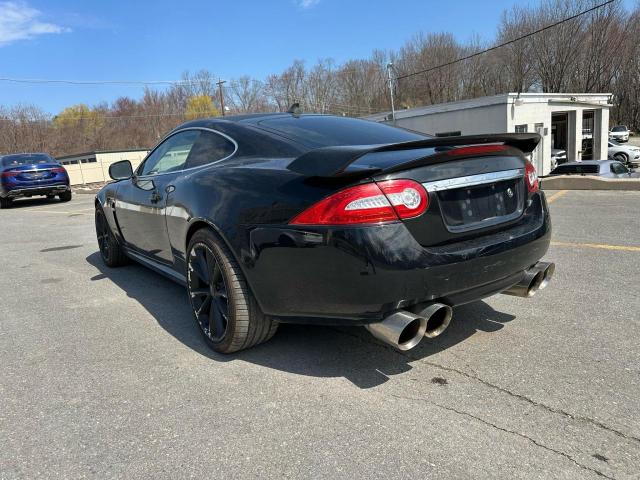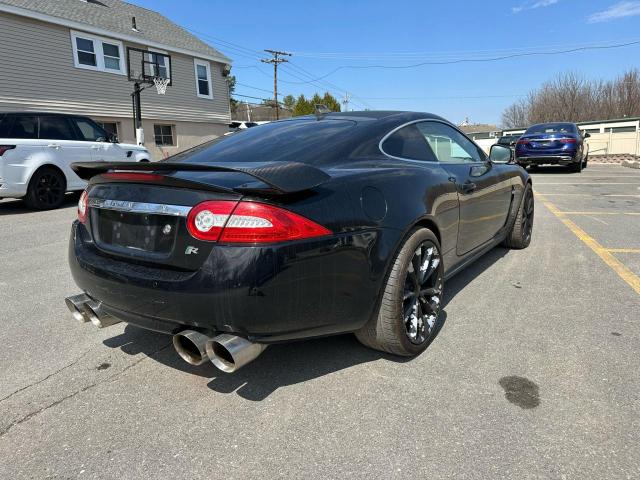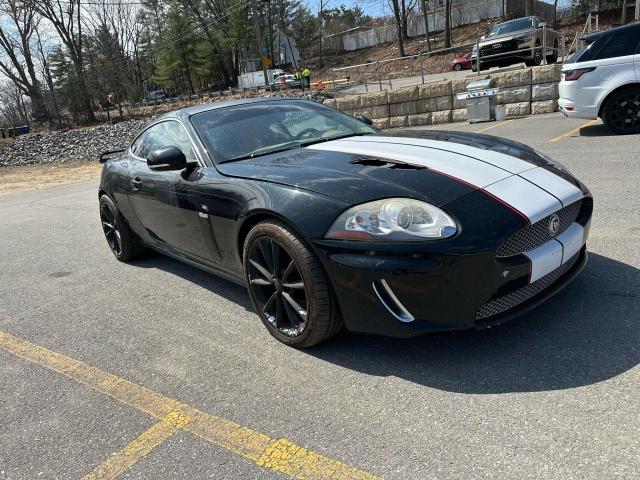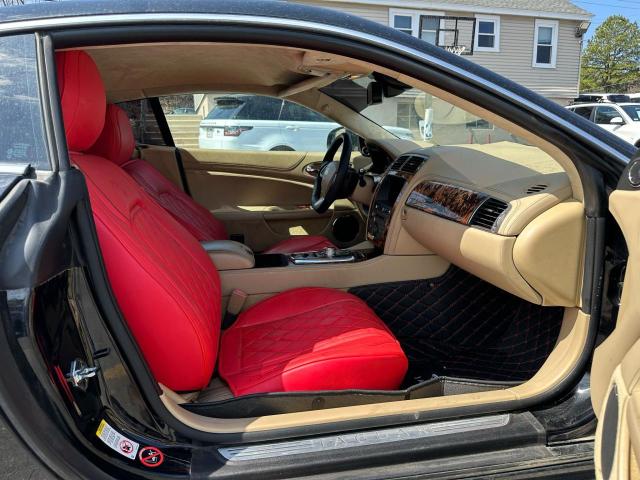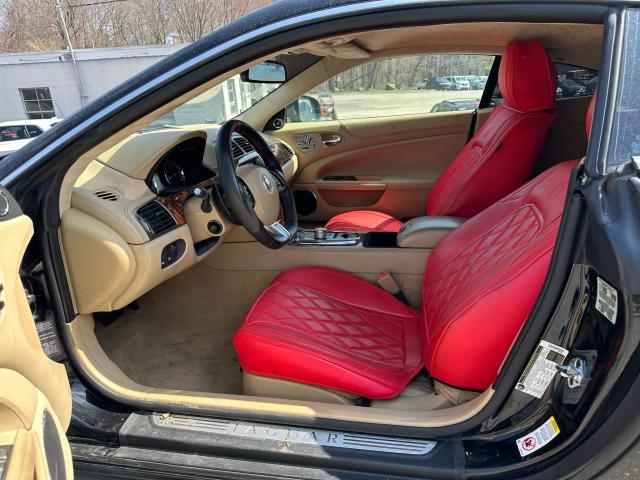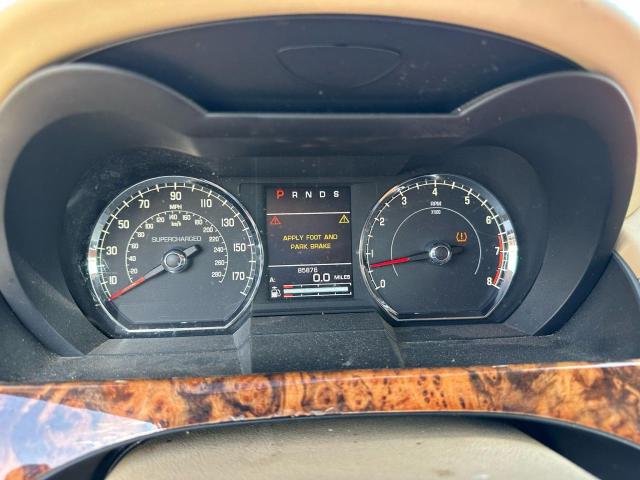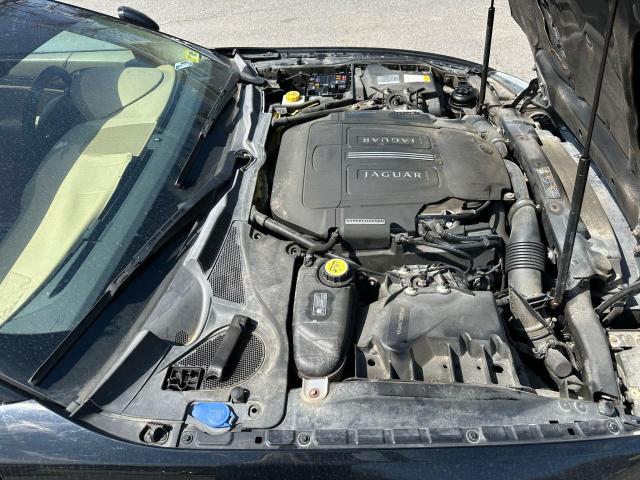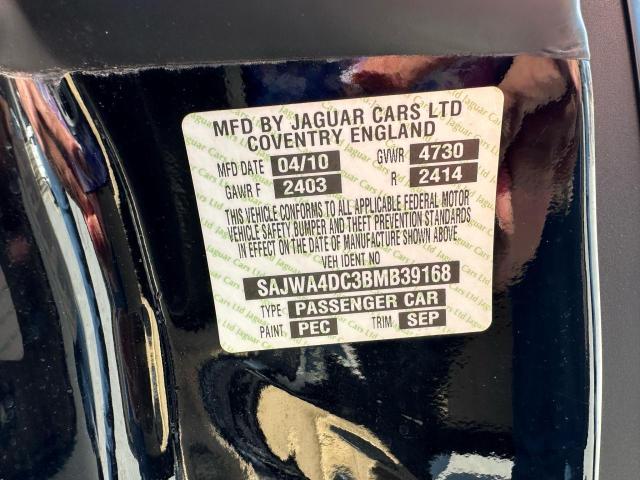2011 JAGUAR XK | SAJWA4DC3BMB39168
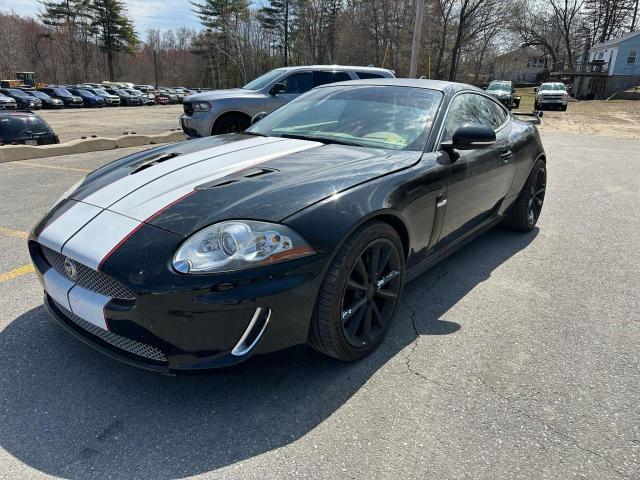 ❯
❯Lot details
- Sale Date2025-04-25
- Lot Number53472345
- Sale documentVA - CERTIFICATE OF TITLE (P)
- LocationMA - NORTH BOSTON
- Odometer85,876 miles (138,204 km)
- Primary DamageMINOR DENT/SCRATCHES
Vehicle specifications
3
~$140,000
Engine: 5.0L supercharged V8
Torque: 680 Nm
0–100 km/h: ~4.4 s
The Jaguar XKR-S represented the peak of the XK range's performance capabilities, blending traditional British grand touring luxury with ferocious supercharged power. Its 5.0-liter V8 engine, enhanced with a twin-vortex supercharger, delivered 550 hp and 680 Nm of torque, enough to launch the coupe to 100 km/h in just 4.4 seconds. Throttle response was immediate, and the exhaust note transitioned from cultured growl to a brutal roar under load, capturing the emotional side of performance.
Handling was significantly upgraded over the standard XK and even the XKR, thanks to revised suspension geometry, stiffer springs, and adaptive damping. The XKR-S sat lower, rode firmer, and responded with precision rarely found in GT cars of its era. A bespoke aerodynamic package improved high-speed stability, and the steering, while slightly heavier, delivered crisp feedback and enhanced connection with the road. Carbon-ceramic brakes were not offered, but the steel system proved consistent and confidence-inspiring even under spirited driving.
What set the XKR-S apart was its duality—it retained the graceful, flowing lines and opulent interior of the standard XK, yet concealed true sports car potential beneath the elegance. Unlike purist track cars, it was built to cross continents swiftly and in style, offering its driver both power and poise in equal measure.
Final Bid Jaguar XK (2011)
$10,500
$10,500
$10,500
Body Styles
The Jaguar XK was available as a two-door grand touring coupe and a soft-top convertible, both sharing the same long hood, short rear deck proportions that evoked classic E-Type DNA. The aluminum-intensive structure allowed for a relatively light curb weight for its class, improving both handling and efficiency. With a wide track and low-slung stance, the XK projected refinement and athleticism simultaneously. The coupe featured a teardrop roofline and subtle rear haunches, while the convertible employed a multi-layer soft-top that retained a sleek silhouette even when raised. Dimensions were generous, yet the car’s proportions masked its size, making it appear more compact and agile than its measurements suggested.
Model Name Meaning (Manufacturer)
The "XK" designation continues Jaguar’s historical naming tradition, tracing back to the XK120 of the 1940s. The modern XK paid homage to that lineage, signaling a return to grand touring performance with modern technology and design. The use of “R” in XKR and “S” in XKR-S denoted increasing levels of performance and exclusivity within the lineup.
Body & Interior Colors and Rims
The XK’s exterior color palette ranged from conservative tones such as Ultimate Black, Lunar Gray, and Frost Blue to more expressive options like Italian Racing Red, British Racing Green, and French Racing Blue—exclusive to XKR-S. Special edition models introduced satin finishes and metallic pearls that altered under different lighting conditions, adding to the XK’s visual drama. Subtle chrome detailing around the grille and windows, or gloss black accents on performance models, helped tailor the car’s character to individual tastes.
Inside, the cabin was a showcase of British craftsmanship. Interior leathers came in Ivory, Warm Charcoal, Navy, and Camel, often paired with contrasting stitching and piping. R-Performance seats on XKR models offered enhanced bolstering, while the XKR-S featured unique seat embroidery, carbon fiber trim, and piano black veneers. The dashboard layout was clean, symmetrical, and crowned by a rising rotary gear selector in later models. Soft-touch materials, real aluminum or wood, and premium carpets elevated the tactile quality throughout.
Wheel designs varied from elegant ten-spoke 19-inch alloys on early base models to aggressive 20-inch Vulcan or Kasuga wheels on XKR and XKR-S trims. Finishes included silver, shadow chrome, and gloss black, often combined with red brake calipers for a sporting accent. Wider rear tires and flared arches enhanced the stance and reinforced its grand touring legitimacy.
Top Expensive Options
- Bowers & Wilkins Premium Surround Sound System: $2,300
- Adaptive Cruise Control with Forward Alert: $1,800
- Heated and Cooled Performance Seats with Memory: $1,600
- Soft Grain Leather Interior with Contrast Stitching: $1,200
- Exterior Aerodynamic Pack (Spoiler, Diffuser, Splitter): $3,000
- French Racing Blue Special Paint Finish: $4,000
- Carbon Fiber Interior Trim Pack: $2,200
- 20-Inch Vulcan Gloss Black Alloy Wheels: $1,500
- Convertible Soft-Top with Acoustic Lining (XKR): $1,900
- Bright Pack with Polished Aluminum Accents: $1,100
vs Competitors
In the grand touring segment, the Jaguar XK positioned itself between traditional luxury coupes like the Mercedes-Benz SL-Class and sportier entries such as the Porsche 911. Where the XK excelled was in offering timeless design, a beautifully appointed interior, and robust performance without sacrificing ride comfort. The XKR-S in particular provided near-supercar performance for less than the price of a 911 Turbo, all wrapped in a package that remained usable on a daily basis. Compared to the Aston Martin V8 Vantage, the XK offered a similar sense of occasion with better tech and more forgiving road manners. It was less agile than the German competition, but more charming, more soulful, and distinctly British in feel.
Fun Fact
The XK was the first Jaguar to be built entirely from aluminum using aerospace bonding and riveting techniques—reducing weight and improving structural rigidity. This engineering approach would later influence the brand’s transition to performance EVs, including the I-PACE, showing how the XK quietly laid the groundwork for Jaguar’s 21st-century reinvention.



